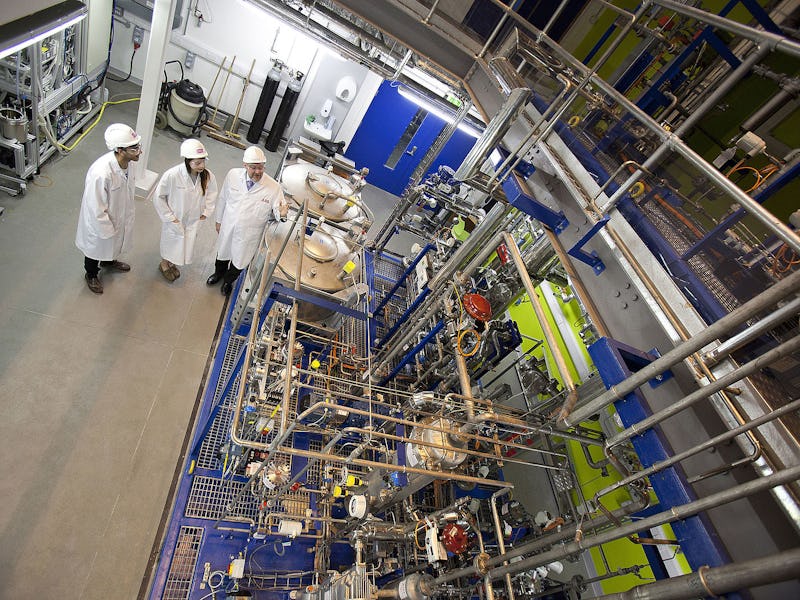Carbon capture could become a big business, but should it?
Selling carbon could make an experimental technology more profitable, but scientists are skeptical.

Capturing carbon dioxide directly from where fossil fuels are being burned and from the atmosphere could become a major industry in the not-too-distant future, according to a new study. That’s because the carbon that is captured can be used to create other products, including fuels, plastics and more. Doing this would reduce carbon emissions, but it might not reduce them enough to stave off the gravest dangers presented by climate change.
The study, just published in the journal Nature, was conducted by researchers from UCLA, the University of Oxford and elsewhere. They found about half a gigaton, on average, of carbon could be captured from fossil fuel sources and the atmosphere per year that could be used for fuel and other purposes. At peak projections, over 10 gigatons could be captured annually annually. The researchers believe it would cost around $100 per ton. They note that IPCC reports have cited carbon capture as a necessary technology if we’re going to avoid the possibly catastrophic effects of climate change.
“Greenhouse gas removal is essential to achieve net zero carbon emissions and stabilise the climate,” Cameron Hepburn, one of the study’s lead authors and the director of Oxford’s Smith School of Enterprise and Environment, said in a statement. “We haven’t reduced our emissions fast enough, so now we also need to start pulling carbon dioxide out of the atmosphere. Governments and corporations are moving on this, but not quickly enough. The promise of carbon dioxide utilization is that it could act as an incentive for carbon dioxide removal and could reduce emissions by displacing fossil fuels.”
Capturing carbon from the places where fossil fuels are being burned and from the atmosphere is certainly better than allowing CO2 to be released into the atmosphere without it ever being removed. But to get serious about tackling climate change, the best solution would be to capture CO2 and store it.
Michael Mann, a professor of atmospheric science at Penn State, tells Inverse that storing carbon is the superior option, but he can see why reusing the carbon is part of the conversation.
See also: MIT engineers develop “revolutionary” new device to capture CO2
Michael Mann, a professor of atmospheric science at Penn State, tells Inverse that storing carbon is the superior option, but he can see why reusing the carbon is part [of the conversation.
“I would rather see it buried,” Mann says. “Some might say that reuse is necessary to make CCS commercially viable. My response to them, then, is that we’re better of incentivizing carbon-free fossil fuel energy than allowing coal to crowd out investment in what is a true solution to the problem.”
The study’s authors note that there are some reasons for commercial interests to take interest in reusing carbon dioxide. They note that in some types of plastic production, it’s actually cheaper to reuse carbon than to make plastics out of “conventional hydrocarbons.”
Many climate scientists worry that we could be letting fossil fuel companies off the hook when we focus on carbon capture too much. If these companies can keep operating as they have been and just say they’re capturing the carbon they’re creating now, then there’s less incentive to switch to renewable energy, which climate scientists say is needed to mitigate climate change.
Multiple oil companies have actually been pushing for more carbon capture technology in recent years, and some have been advertising how using this technology makes them greener companies. It should be noted that not all carbon is captured when this technology is used at sites where fossil fuels are being burned.
“The stone age didn’t end for want of stones. And the fossil fuel age won’t end for want of fossil fuels,” Mann says. “It will end because something better has come along. That thing is renewable energy.”